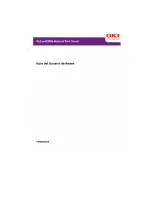
Chapter 2. Architectural and technical overview
49
2.1.7 Oscillator card
Two (redundant) oscillator cards are on the CEC midplane. These oscillator cards are
sometimes referred to as
clock cards
. An oscillator card provides clock signals to the entire
system. Although the card is actively redundant, only one is active at a time. In the event of a
clock failure, the system dynamically switches to the redundant oscillator card. System clocks
are initialized based on data in the PU Book VPD. Both oscillators must be initialized so that
the standby oscillator can dynamically switch if the primary oscillator fails.
The system oscillators support spread spectrum for reduction of radiated noise. Firmware
must ensure that spread spectrum is enabled in the oscillator. A system oscillator card is
shown in Figure 2-10.
Figure 2-10 Oscillator card
2.1.8 Node controller card
Two embedded node controller (NC) service processor cards are on every processor book.
They plug on the processor book planar.
The NC card provides connectors for two Ethernet ports (J01, J02) to BPH.
An NC card is shown in Figure 2-11.
Figure 2-11 Node Controller card
There is a full duplex serial link between each node controller NC and each DCA within a
processor book. This link is intended primarily for the relaying of BPC-ip address and MTMS
information to the System Power Control Network (SPCN), but can be used for other
purposes. The DCA asynchronously forwards this information to the NC without command
input from SPCN.
Содержание Power 595
Страница 2: ......
Страница 120: ...108 IBM Power 595 Technical Overview and Introduction...
Страница 182: ...170 IBM Power 595 Technical Overview and Introduction...
Страница 186: ...174 IBM Power 595 Technical Overview and Introduction...
Страница 187: ......














































